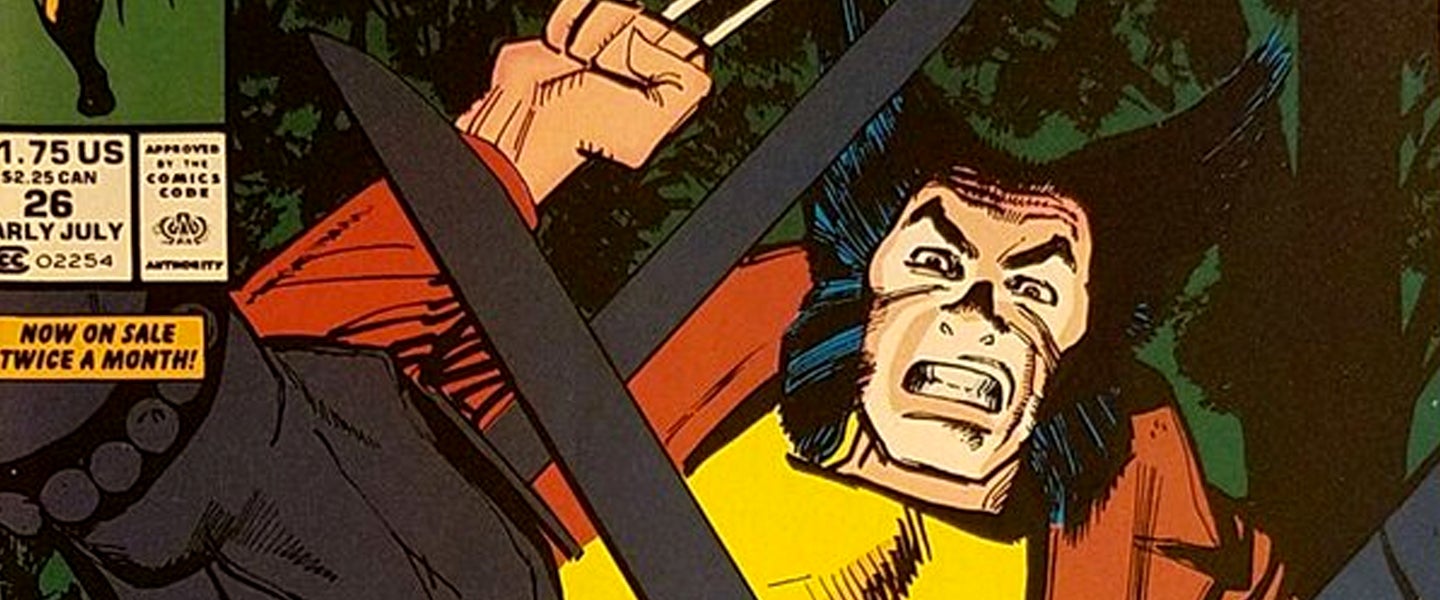“That’s a lot of mutton chops,” I said to myself while staring at an X-Men poster by Jim Lee in the mancave/toy museum that is my basement. Not only was Wolverine rockin’ the chops under his mask, but in the same poster, there was also Beast’s furry blue sideburns and two female characters even had them — Wolfsbane and Feral.

Outside of that poster, I remembered at least a few other X-Men characters who had similar facial hair in the 1990s, namely the villains Sabretooth, Wild Child and Sebastian Shaw.
Now, there are a shit-ton of X-Men characters, but that’s still a lot of mutton chops, especially considering it’s not like that look was in style back in the 1990s. “If anything, that was more of a fashion in the 1970s, which is why Wolverine has them,” explains Dan Wallace, author of the 2006 edition of The Marvel Encyclopedia. Unsurprisingly, the history of marvel mutton chops starts with Wolverine: Debuting originally as a Hulk villain in 1974, Wolverine joined the X-Men in the 1975 relaunch of the series, along with characters like Storm, Nightcrawler and Colossus.

“Back in the 1970s, men were hairy. Just think of Burt Reynolds’ nude centerfold — that’s what a man looked like back then,” Wallace says. So when the creators of X-Men were developing the very manly character of Logan, his hairiness was in keeping with the times. Additionally, Wolverine was a character that was supposed to be over 100 years old, so it made sense that his hairstyle might be carried over from his days fighting in the Civil War.
On the more practical side of things, Matt Forbeck — who authored the 2014 Marvel encyclopedia — says, “It’s a lot easier to draw mutton chops than the stippling for a five-o’clock-shadow, so that became an easier way to show someone was a badass dude. Or, maybe Jim Lee just really liked to draw mutton chops.”
Lee, who presently runs DC Comics, was an immensely popular comic book artist back in the 1990s. He made a huge mark with his time on the X-Men in the early 1990s, and his look for the characters would later carry into the X-Men animated series.
When Wolverine nemesis Sabretooth debuted a couple of years after Logan, he was supposed to be something of a mirror image of Wolverine, so he was given a similar look, complete with the same facial hair. Both of these characters, though, would retain their 1970s style into the 1990s and beyond, which Wallace explains is part of the nature of comic books as a visual medium. “When looking at something like X-Men in particular — as a property with a lot of characters — you can oftentimes look at a character and know what era they debuted in. So Logan was born in the 1970s because of the mutton chops, and you can tell Rogue is from the 1980s with her big hair. And once a certain look becomes part of a character, that look is hard to get rid of because that’s how people recognize a character, especially since several different artists will be drawing them.”
This is also why costumes are so important in comic books, as Forbeck notes that costumes are a way for you to identify which character is which. But characters aren’t always in costume. In the X-Men, there’s a lot of time spent in Xavier’s Mansion with the X-Men just hanging around whining about how humans don’t like them, and in scenes like that, you still need to be able to tell who everyone is. To do that, Wallace says that comics “overcorrect” by making bold choices with facial features, which is why you get extreme features like eye patches, mohawks, unnatural hair colors and, indeed, mutton chops.
But if those sideburns were Wolverine’s identifying feature, why then did so many characters end up with that same aesthetic? According to artist Roger Cruz — who worked on X-Men in the 1990s along with Lee, Andy Kubert and others — this helped to portray the “feral animalesque nature of those characters.” Indeed, much like Wolverine, the characters of Sabretooth, Wild Child, Wolfsbane, Feral and even Beast — who debuted before Wolverine, but got his mutton chops much later — were meant to be animalistic mutants, so this was a visual way of telling the audience that.
Further, Wallace and Forbeck seem to agree that it was also an effort to mimic the success of Wolverine, who started to really break out as a character in the early 1980s, with issues like Uncanny X-Men #133 — where Wolverine went on a one-man rampage to save his fellow X-Men — and his miniseries in 1982, which was written by Chris Claremont and drawn by Frank Miller.

From that point onward, Wolverine became the most popular character in the X-Men, not only in the comic books, but also the cartoon and, of course, the movies, where he was iconically played by Hugh Jackman — mutton chops and all — for almost two decades.
Or perhaps the reason for all of these mutton chops is even simpler still — at least when you look at it from the perspective of the other mutton-chop-wearing mutants. Just like how Jackman is, for some dudes, the coolest guy in our own universe, Wolverine is arguably the coolest guy in the Marvel universe, so it makes sense that a few other X-Men might want to replicate his signature, and decidedly hairy, style.

